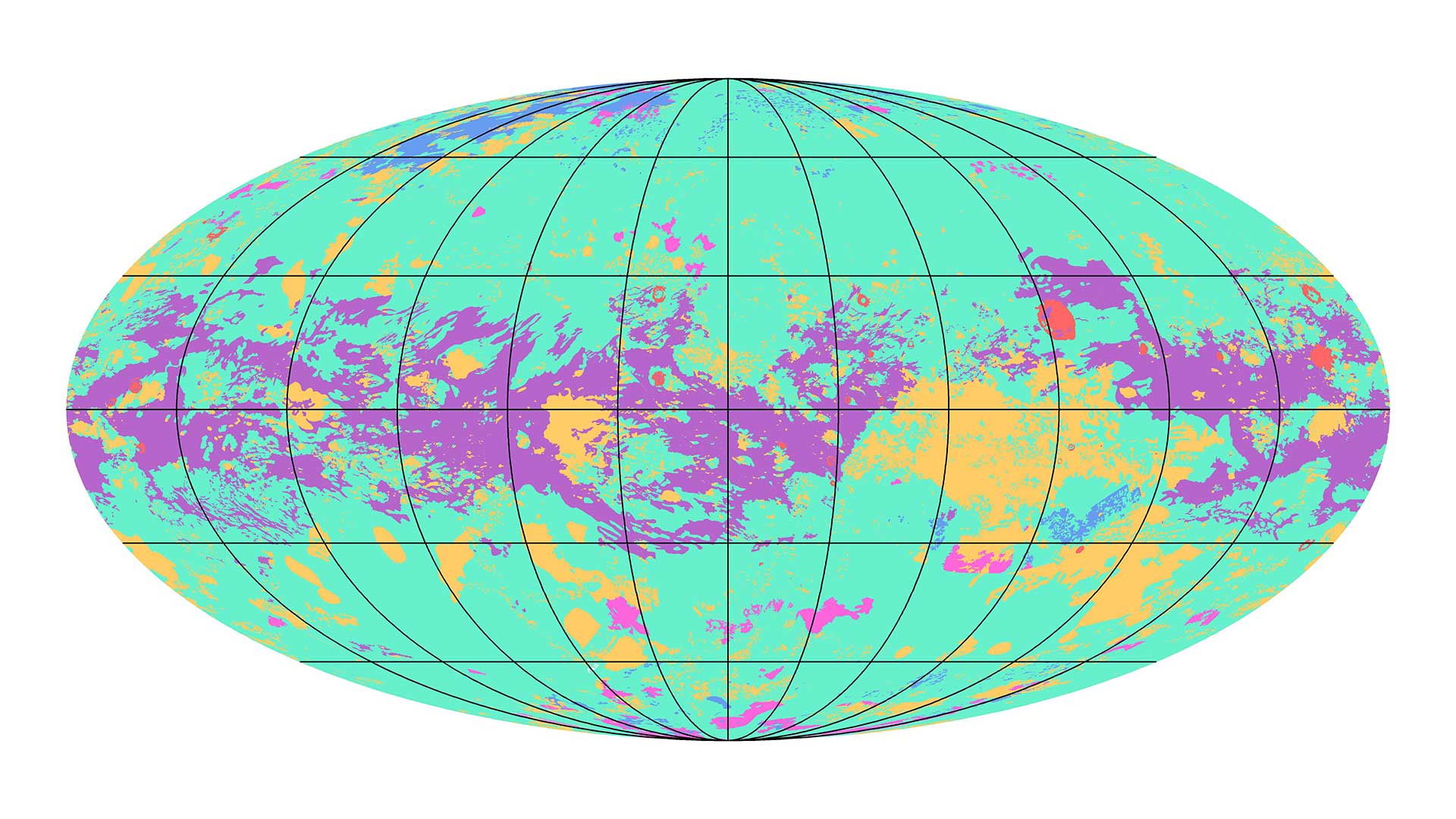 Titan consists mainly of plains (green), dunes (purple), and hummocks and mountains (orange).Hundreds of lakes and seas (blue) occupy its poles. Broken terrain (magenta), possibly like karst on Earth, occupies high latitudes. Craters are shown in red.
Titan consists mainly of plains (green), dunes (purple), and hummocks and mountains (orange).Hundreds of lakes and seas (blue) occupy its poles. Broken terrain (magenta), possibly like karst on Earth, occupies high latitudes. Craters are shown in red.
Saturn's moon Titan is larger than the planet Mercury and is the only moon in the solar system with an atmosphere. Now, researchers have published the first complete geologic map of its surface.
The research appears in the journal Nature Astronomy.
A picture stitched together from radar that pierces Titan's hazy atmosphere and other data from NASA's Cassini mission reveals a landscape roughly divided by latitude.
Between the hydrocarbon lakes of the north polar region and the windblown equatorial dunes lie vast plains, old mountains and broken terrain, much of it covered foot-deep in hydrocarbons.
Titan has an active hydrological cycle based not on water but methane, including methane clouds and liquid methane rain, rivers, lakes and seas.
As on Earth, precipitation on Titan helps shape the landscape, as do impact craters, wind erosion and geological processes.
"It's quite remarkable that this material — this liquid hydrocarbon — actually is able to form similar types of geological features that we see on Earth," said co-author David Williams, an associate research professor in Arizona State University's School of Earth and Space Exploration.
Plains cover the majority of Titan's surface (65%), followed by dunes (17%), and hummocks and mountains (14%).
More than 650 relatively young lakes and seas — some dry, some filled with liquid hydrocarbons — dot the moon's polar regions. Possibly due to global climate cycles, these occur mainly in the north.
Based on which features overlap one another, the authors concluded that Titan's hummocks and mountainous are its oldest terrain type. Williams said the findings call for a new mission.
"We are getting a very thorough analysis of the data, and it's really raising more questions about this wonderfully complex and strange world," he said.
NASA's Cassini mission ended in 2017 after 13 years spent studying the Saturn system. Beyond gathering data on Titan's hydrology and chemistry, it discovered icy plumes spewing from Saturn's moon Enceladus, spotted gigantic polar vortexes and revealed the dynamics governing the gas giant's famous rings.
The agency plans to launch a helicopter-like Titan rover called Dragonfly in 2026.


By submitting your comments, you hereby give AZPM the right to post your comments and potentially use them in any other form of media operated by this institution.